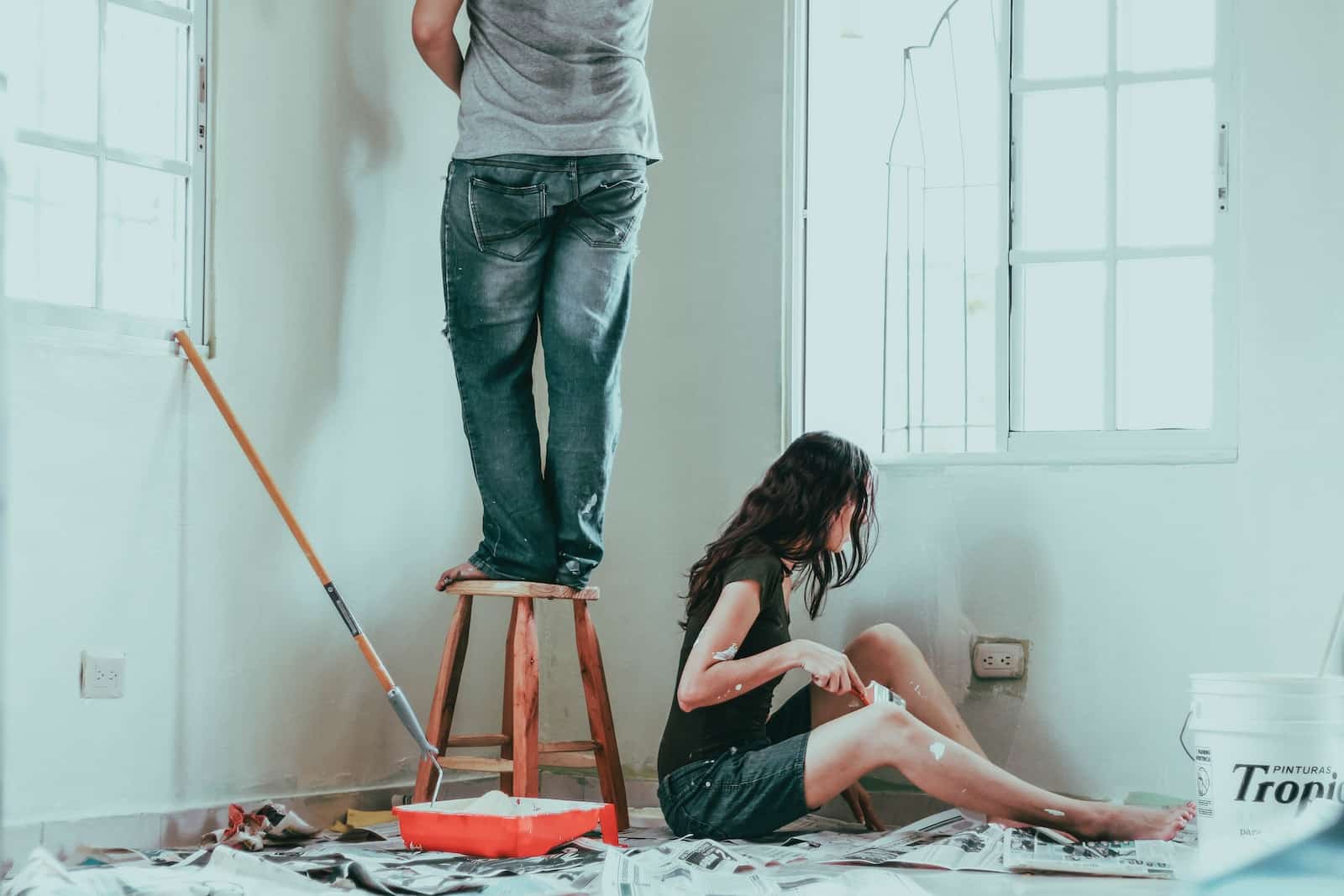The latest decorating trends

 |
November 27, 2023
|
November 27, 2023
The world of interior design is dynamic and ever-evolving. As you stand on the threshold of redecorating your homes or workspaces, it is essential to stay abreast of the latest decorating trends. This article will guide you through the most recent and fashionable trends in interior design, helping you transform your spaces into the epitome of style and comfort.
Embracing Natural Elements
With a growing emphasis on sustainability and environmental consciousness, the incorporation of natural elements into interior design has become a significant trend. This section explores how to bring nature into your homes and workspaces effectively.
A lire en complément : What are the best ski destinations in the French Alps ?
Natural elements include a wide range of materials and motifs. From furniture made of untreated wood, rattan or stone, to home accessories in ceramics or terracotta, these raw, unrefined materials bring an earthy and organic feel into your interiors. These elements not only provide a soothing and calming environment but also contribute to a healthier living and working space by improving air quality and reducing stress levels.
Consider incorporating indoor plants into your design. They are not only aesthetically pleasing but also serve as natural air purifiers. Opt for large leafy species like Monstera or Fiddle Leaf Fig for a tropical vibe, or succulents and cacti for a desert-inspired look.
Avez-vous vu cela : How are load stopping devices inspected ?
The Rise of Multifunctional Spaces
As the lines between work and home continue to blur, multifunctional spaces are becoming increasingly popular. This section discusses how to design such spaces to accommodate various activities without compromising on style and comfort.
Multifunctional spaces serve different purposes at different times of the day. A living room can double as a home office during daytime and a relaxation area in the evening. Achieving this requires careful planning and smart furniture choices. Opt for pieces that offer flexibility, like a desk that can also serve as a dining table, a couch that can turn into a bed, or a coffee table with storage options.
While creating these spaces, remember to strike a balance between functionality and aesthetics. Soothing colors, adequate lighting, and a clutter-free environment are paramount to maintain a serene atmosphere conducive for both work and relaxation.
Luxe Minimalism
Minimalism has been a long-standing trend in interior design, focusing on “less is more”. However, the recent trend is towards luxe minimalism, creating warm and inviting spaces without clutter. This section explores how to achieve this balance.
Luxe minimalism combines the simplicity of minimalism with the opulence of luxury. This trend is about achieving a rich, lush feel with a limited number of elements. Key to this trend is the selection of high-quality materials and finishes. Think marble countertops, rich wooden flooring, velvet upholstery, and brass fixtures.
Color plays a crucial role in luxe minimalism. While the minimalist palette is usually dominated by neutrals, luxe minimalism allows for the introduction of bold, rich hues. Deep blues, emerald greens, or even pastel tones can be used in moderation to add a touch of luxury.
Biophilic Design
Biophilic design is a concept used within the building industry to increase occupant connectivity to the natural environment. It involves integrating nature into interiors and architecture. This section delves into the various ways you can incorporate biophilic design into your spaces.
Biophilic design not only involves incorporating plants into your interiors but also making use of natural light and views of the outside. Large windows, skylights, and glass doors can help bring in an abundance of natural light. Where possible, arrange your spaces such that they offer views of greenery or landscapes.
Another aspect of biophilic design is the use of nature-inspired patterns and textures. These can be incorporated through wallpapers, upholstery, or artworks. For instance, a wallpaper with a leafy pattern or a rug with a wave-like texture can add a touch of nature to your spaces.
The Revival of Vintage
Vintage styles have always held a charm that is hard to resist, and their revival is one of the latest trends in interior design. This section discusses how to integrate vintage elements into your contemporary spaces.
Vintage design involves the use of pieces from a certain era, bringing a sense of nostalgia and charm. However, the revival is not about recreating the past, but about incorporating vintage elements into modern settings. This could involve using a vintage chair in a modern living room, or vintage light fixtures in a contemporary kitchen.
While incorporating vintage pieces, it is important to maintain a balance and not let the vintage elements overpower the contemporary feel. Carefully select pieces that complement your existing décor and add a touch of character and uniqueness.
Japandi Style
Japandi, a fusion of Japanese and Scandinavian design principles, is the latest buzzword in the interior design world. This section explores the Japandi style and how you can integrate it into your spaces.
Japandi is characterized by the simplicity and functionality of Scandinavian design combined with the elegance and sophistication of Japanese aesthetics. The Japandi style involves the use of clean lines, minimalist furniture, muted color palettes, and natural materials.
To incorporate Japandi style into your spaces, opt for furniture with simple, clean lines and neutral colors. Use natural materials like wood and bamboo, and add pops of color through indoor plants or natural-toned accessories. Lighting plays a crucial role in Japandi style. Make use of diffused, soft lighting to create a warm and inviting atmosphere.
The Return of Art Deco
Art Deco is resurfacing as a prominent trend in interior design, with its glamorous aesthetics and luxurious materials gaining popularity. This section examines how to incorporate Art Deco elements into your modern spaces.
Art Deco is a style that originated in the 1920s and 1930s, characterized by bold geometric patterns, rich colors, and high-end materials. This style allows for a perfect blend of modern and vintage, creating a luxurious yet comfortable atmosphere.
The use of geometric patterns is a hallmark of Art Deco design. Think bold, graphic rugs or wallpapers with striking geometric patterns. Metals such as brass, chrome, and gold are heavily featured in Art Deco design. Consider incorporating these metals into your furniture or decor pieces for a touch of glamour.
When it comes to color schemes, Art Deco favors bold, rich tones. Think deep blues, vibrant greens, and luscious reds. These can be balanced out with neutral tones like beige and cream to prevent the space from feeling overwhelming.
Remember, the aim is to create a space that exudes luxury and opulence, while still maintaining a sense of comfort and hospitality.
The Evolution of Smart Homes
With technological advancements making their way into our homes, smart homes are becoming the norm. This section delves into how you can make your home smart without compromising on style and comfort.
Smart homes are all about improving functionality and making life easier. This could involve automatic lighting systems that adjust according to the time of day, smart thermostats that learn your schedule and adjust the temperature accordingly, or even voice-controlled assistants that can play your favorite music or tell you the weather.
While the concept of a smart home may seem futuristic, it doesn’t mean your home has to look like a sci-fi movie set. The key is to blend technology seamlessly into your decor. Choose devices with designs that complement your home’s aesthetic. For instance, if you have a minimalist home, opt for devices with sleek, clean lines.
In the process of making your home smart, don’t forget the basics of interior design. Maintain a balance between function and aesthetics, and create a space that is both stylish and comfortable.
Conclusion
The world of interior design is ever-evolving, with new trends emerging regularly. Whether it’s the incorporation of natural elements for a sustainable and calming environment, the creation of multifunctional spaces for improved functionality, the opulence of luxe minimalism, the connection to nature through biophilic design, the charm of vintage revival, the simplicity yet sophistication of Japandi style, the glamour of Art Deco, or the functionality of smart homes – there’s a trend to suit everyone’s style and preferences.
Remember, while it’s exciting to explore these trends, it’s important to create a space that reflects your unique personality and style. Use these trends as a guide, but don’t be afraid to add your personal touch. After all, the most important thing about your space is that it feels like home to you. Happy decorating!
